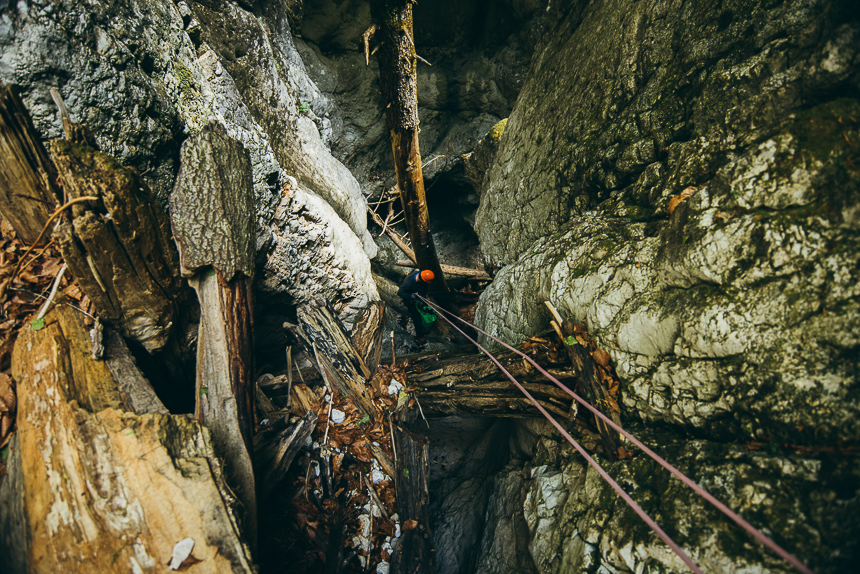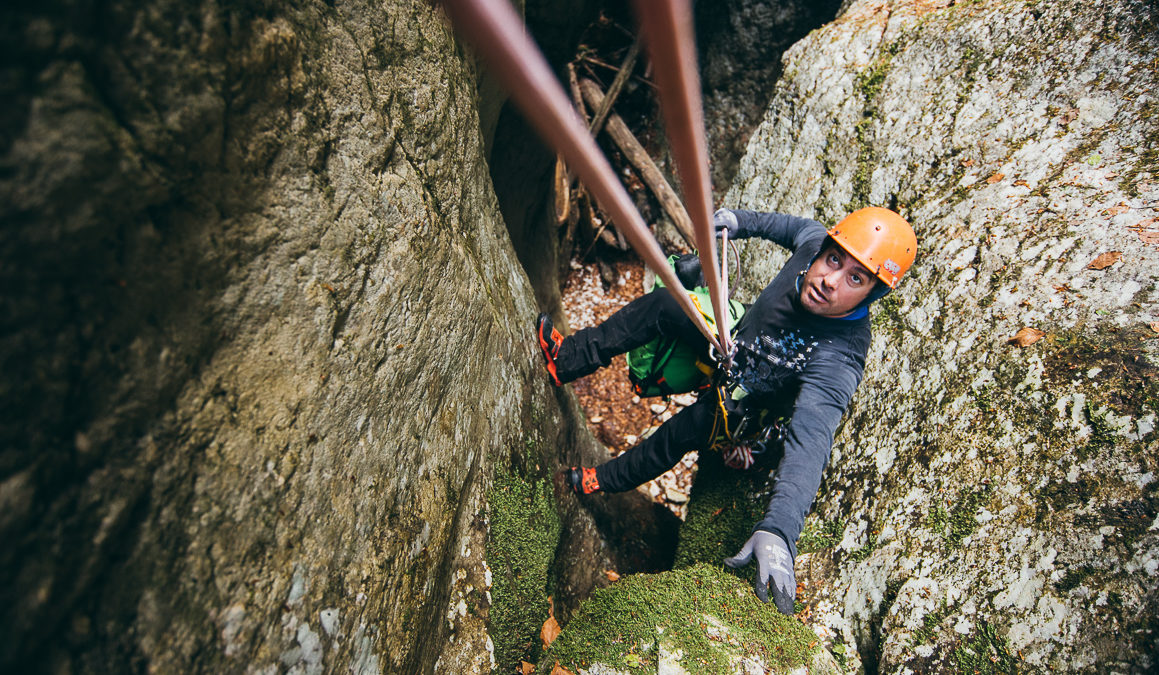Following the phase of the tropical heating of our planet, there came an age called Kvartar, about two and a half millions of years ago. The era of frequent climate changes, also commonly called The ice age. It formed three significant glaciers in our region – Soča Glacier, Savinja glacier and Bohinj Glacier. There are no icy remainings of the first one. Still, there are two tiny reminders that there was a glacier underneath the mountains Triglav and Skuta.
The glaciers were sliding from the top of the mountains to the valleys slowly. Along with the ice and water, they brought gravel which was forming all sorts of natural forms. Most of the Slovens know that Bled and Bohinj lakes are formed by glaciers. Fewer people know that there is also a magnificent canyon called Mostnica just a click away from Bohinj Lake. There are a lot fewer people who know about the 5 kilometres long canyon Ribnica where the Ribnica stream found its way towards the upper Bohinj Valley. Bohinj glacier shaped the deep gorge deeper than 50 meters on some parts.
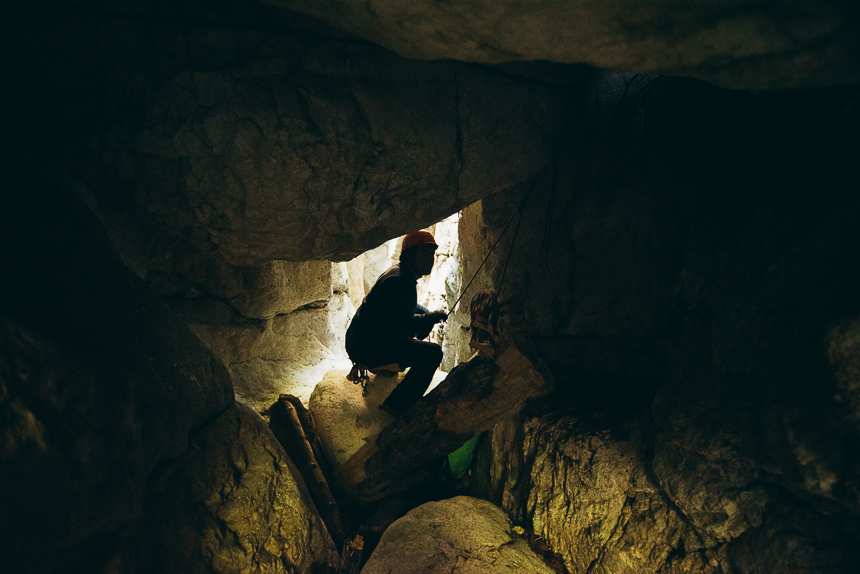
There is just a little written about this canyon. There is a story from my friend Bogdy Kladnik, pioneer of Slovenian canyoning. In 1989 he and Boštjan Veber made the first documented descent of Ribnica canyon. Their “journey” took long 12 hours using a small raft and a rope to descend the canyon. They left the canyon in pitch darkness in using one just one weak battery lamp.
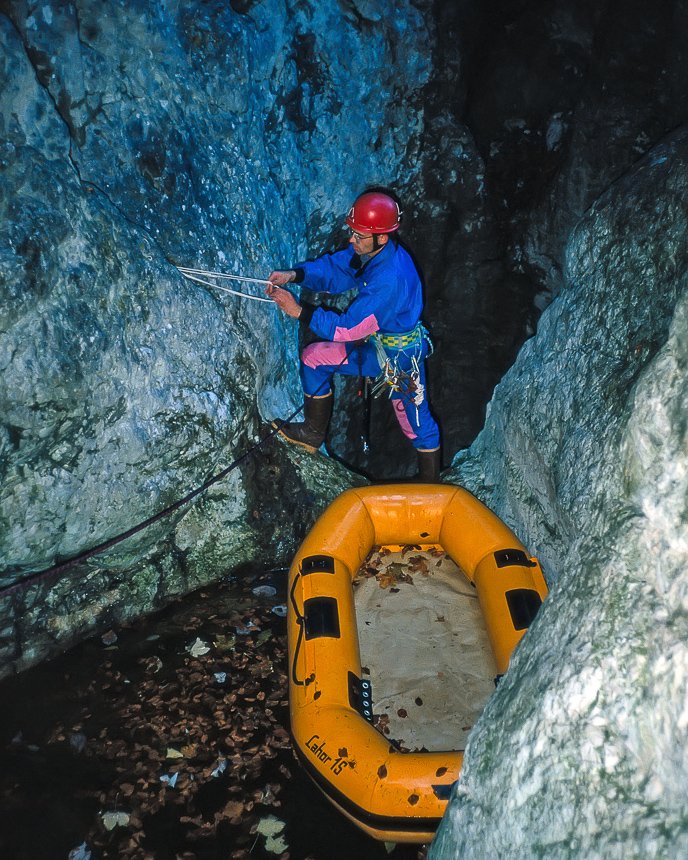
There are some references that state that Ribnica canyon was used to bring the woods from Pokljuka plateau to the valley. Logs were rolled into the bedrock, and the high water should carry the woods into Srednja vas village. It is hard to imagine a sufficient amount of water, taking into account that the logs tend to get stuck in the canyon, but it is still possible. In the past, they were using a similar system in the area of town Idrija. There were dams called klavže, that were accumulating the water. After being open, the small tsunami took the wood and brought it to the big rake in Idrija. Unconfirmed sources are stating that Ribnica was used by our military. The troops used it as a training ground for specific survival skills in an unfriendly environment and to build their endurance.
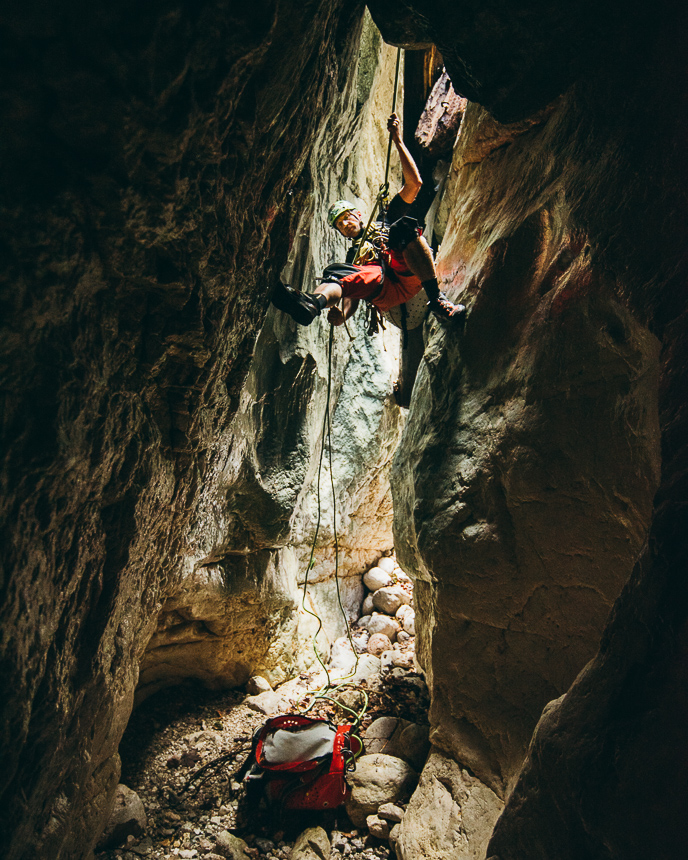
Sum of all this fact convinced me to do this canyon on a day when I will have no idea where to go, or there will be no chance to do any other canyon. And sooner or later day like this happens. It was Sandi’s call to meet in the village of Srednja vas. We left two cars there and took the third to the area called “Na kovceh”, just a few minutes further from the Uskovnica mountain. Without putting on the wetsuit, we entered the canyon. Immediately it surprised us how deep between two slopes we can find 2 to 4 meters wide bedrock with white rocks. It tells that the water runs here if there is a sufficient amount of rainfall.
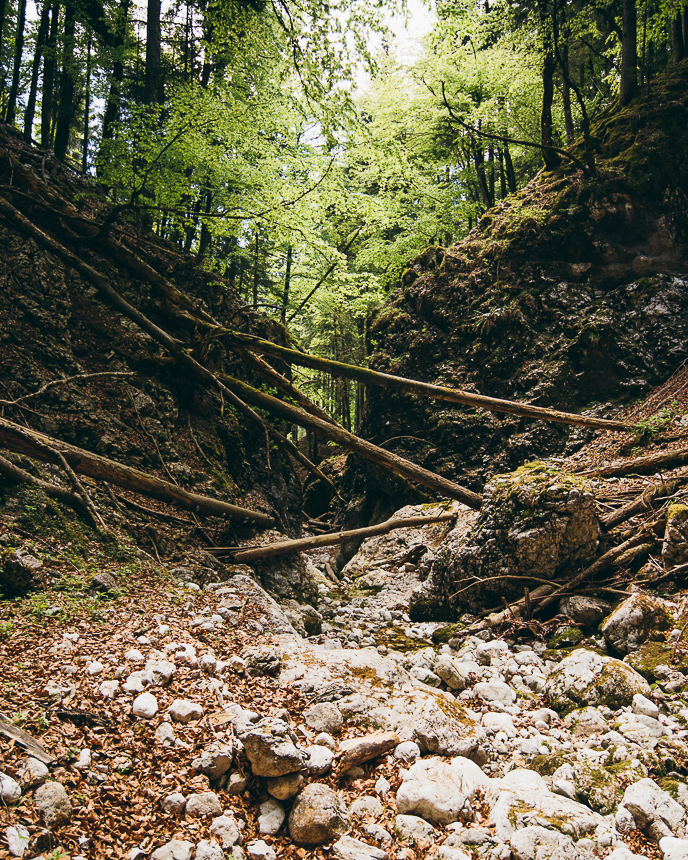
There was infinite small downclimbs and short abseils. But sometimes not everything goes according to the plan. I can remember the moment at one very specific downclimb where I slipt. There was a small pool, about half a meter deep, just below me. “Fu..” I yell. Before I finish the swearword, I end up in this brown water below. Soaked up until my waist and even a little bit higher, I laugh, relieved that all my bones and joints are ok. Wet shorts and T-shirt will be dry in no time. But the water was not really the water you expect from mountain spring. I smelled like cow poo. But if there are 4 sweaty men together, you cant expect the smell of a perfume shop anyways, so I didn’t bother. Maybe the only thing that bothered was my reputation. After this little accident, all the downclimbs were being rated as “Is it down climbable if you are clumsy as Žiga”.
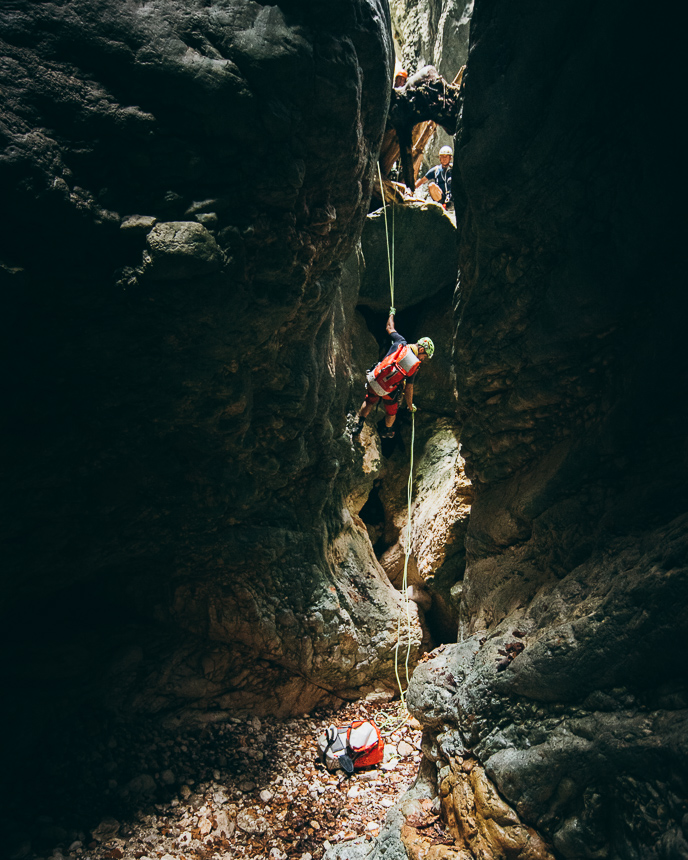
The gorge started to get narrower and narrower. We were fighting with mikado numerous times. Mikado is a collection of a stuck woods in our slang. Looks like the fact that they used this canyon as a water transport system is true. There are two ways to skin this cat. One way is to climb up wet and slippery logs and then descend them again, or you find the way underneath the logs, and you do it more as a speleo guys. Either way can be quite exhausting after doing it a couple ten times. Every time I do it, I ask myself why do I do it… Maybe because of well-earned beer in the end which I drink without a guilty conscience. When I was squeezing myself through one of these mikados, I remembered Bogdy. He had to squeeze through with a raft. No wonder it took them 12 hours to descend the canyon.
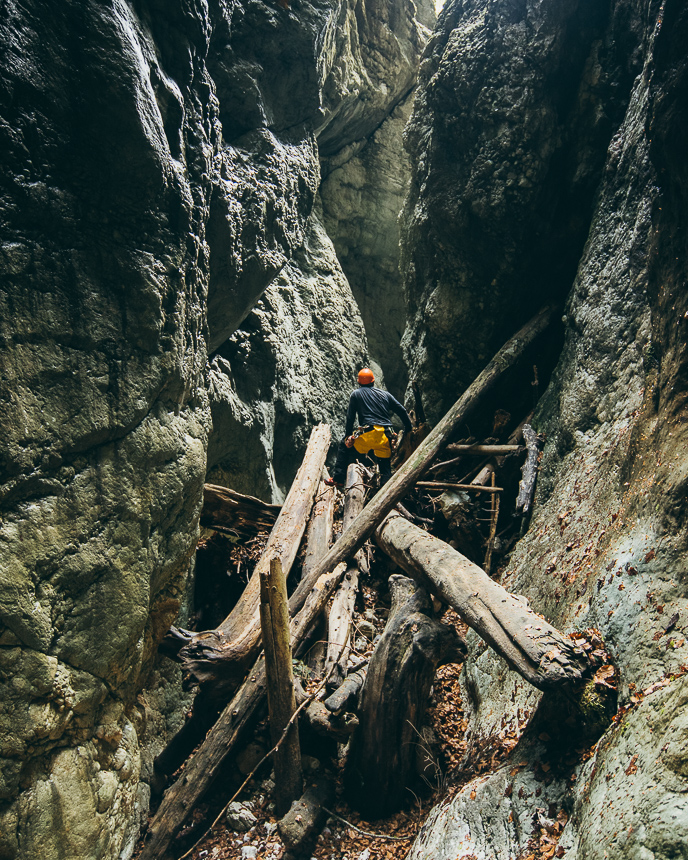
Narrowing of the canyon resulted in longer abseils and pools full of water with us still resisting the urge to put on the wetsuits. We always find a wat to stay dry. Even this one time when my friends were sending me into a presumably inevitable no-way-to-stay-dry pool. Sandi went ahead and passed the small pool. We needed a longer rope to descend the following waterfall. So he calls me forward. With movement, that, in my opinion, reminded of a ballet dancer (but in reality probably more like a clumsy teenager with legs he hasn’t learn how to control) I reach him and his anchor point without getting wet. Looking over the edge, I realize there is no way of descending this waterfall without getting a bath in the cold water in the end. There was no space to put the wet suit on, so I held my breath, and I said to my self to go with a flow. But sometimes luck struck you twice in a day. While descending just behind a corner that I couldn’t see from the top, I found a convenient ledge. With a little bit of manoeuvring, I used it to avid swimming in the icy bath. I am not that clumsy after all, eh? 🙂
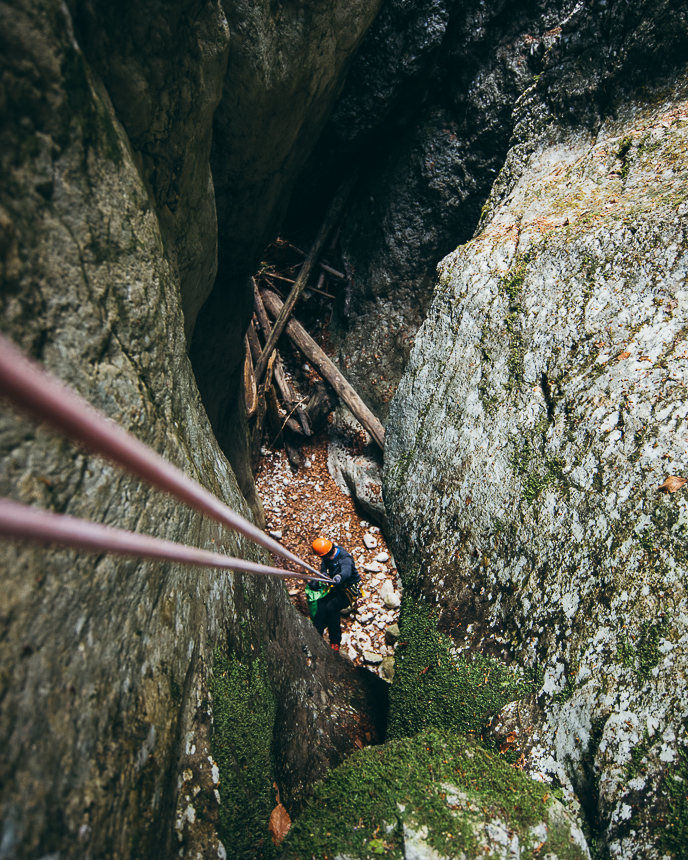
We were the most fascinated in the middle part of the canyon. It narrows down to the meter and a half wide and at least 50 meters deep crack. If the whole canyon were like this, it would be on the list of the most visited European canyons. Instead of it, there are repeating sections of more or less narrow passages, followed by wider parts. To prevent from being monotonous the canyon challenges you with mikado here and there.
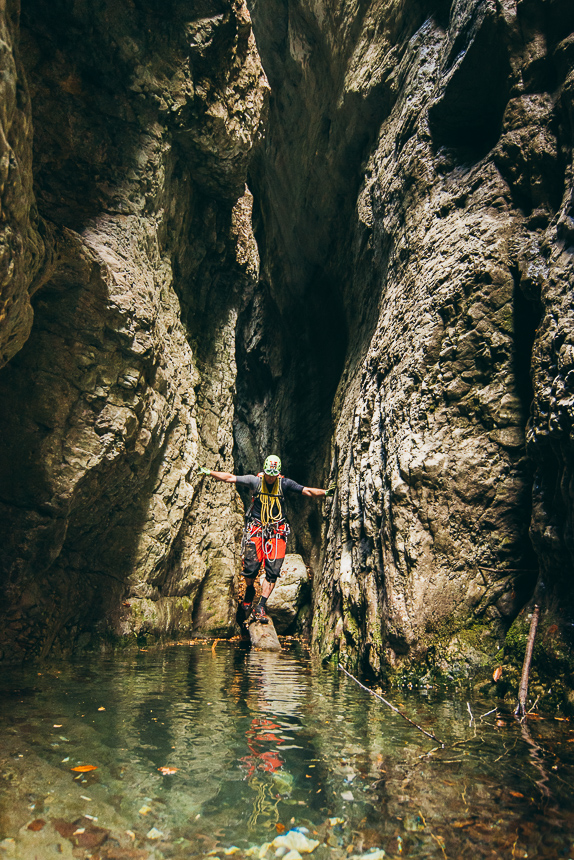
There is no flowing water up until the lower third of a canyon, where it is being collected by side streams. The water then flows over small waterfalls. It is a necessity to use a wet suit in this section. The highest abseil we did in the whole canyon is about 25m which is far from impressive for canyoneering perspective.
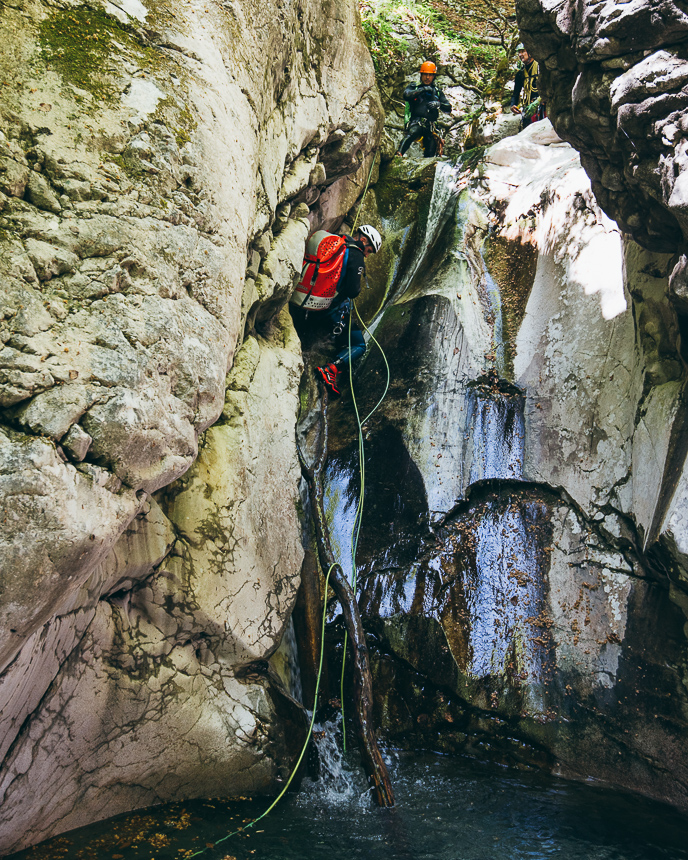
It was much more impressive how the beer vanished after the trip. We entered the local restaurant, which is at the end of the canyon with our wetsuits on. Surprisingly the bartender did not complain about our dress code. While handing us the beer, he told us that there is usually one group per year that do this canyon. So it is not so uncommon.
For us, it was time to debrief after the canyon. We were all agreeing that it is a long and adventurous canyon. That it is breathtaking canyon at some parts. We were laughing about the fact that college Bob exited the canyon couple of years ago stating: “That this is not his thing”. We were discussing the glacier, how big had it to be, that such enormous canyon was formed. We didn’t count all the abseils, but there had to be more than 40 of them. Each of us would like to see more water in this canyon. It would be much more fun. But I must say that I can’t imagine manoeuvring through all this mikado with flowing water … Somebody could get stuck there. Somebody as clumsy as Žiga, for example :).
